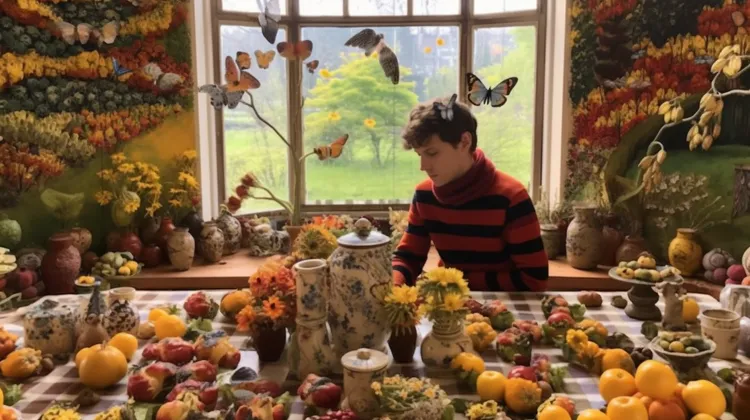
Reflecting on Blockchain Arts: Kenny Schachter and Slow Food
Slow Food: Kenny Schachter Reflects on Blockchain Arts Past, Present, and Future
In the fast-paced, technology-driven world we live in today, the concept of slow food—deliberate, local, sustainable eating—has gained significant popularity. But how does this idea of slowness translate into the art world? The renowned art dealer and curator Kenny Schachter sheds light on this intriguing question, specifically in relation to blockchain arts, in his latest reflection.
Schachter, a widely respected figure in the art industry known for his keen eye and innovative approach, takes us on a journey through the past, present, and future of blockchain arts. He begins by reminiscing about the early days of blockchain, when the technology was seen as a disruptor that could revolutionize the art market. While there was much hype surrounding the potential of blockchain to create transparency and traceability in the art world, Schachter notes that progress has been slow.
Moving on to the present, Schachter explores where the blockchain arts scene stands today. He acknowledges that while some strides have been made, such as the registration of artworks on the blockchain, disagreements and challenges still persist. Schachter raises important questions about the lack of standardization and the varying opinions on what blockchain can truly achieve for the arts. He argues that in order for blockchain to truly take hold, there needs to be a collective effort to define its purpose and potential in the art market.
Looking toward the future, Schachter predicts a time when blockchain arts will become mainstream. He envisions a world where every artwork, from a masterpiece in a museum to a doodle by a child, will have a digital identity on the blockchain. This, he believes, will bring about transformative changes in the art market, democratizing access and empowering artists and collectors alike. Schachter suggests that the slow adoption of blockchain in the arts is actually a positive thing, as it allows for careful consideration and calibration of the technology’s impact.
As Schachter delves deeper into the topic, he raises important concerns about the commodification of art and the potential loss of human connection in a blockchain-driven art market. He questions whether the value of an artwork lies solely in its digital certificates or if there is something intangible and irreplaceable that may be lost in the process. This reflection invites readers to contemplate the balance between technological progress and the preservation of traditional artistic values.
Schachter concludes his article by emphasizing the importance of a slow and measured approach to the adoption of blockchain in the arts. He suggests that artists, collectors, technologists, and curators should collectively explore the possibilities, limitations, and ethical implications of this new technology. By doing so, they can ensure that the blockchain arts movement aligns with the values of slow food—a conscious, sustainable, and responsible approach to creativity and consumption.
In Kenny Schachter’s thought-provoking reflection, he prompts us to consider the role of slowness in the blockchain arts movement. Is it a hindrance or an opportunity? As we navigate the uncharted territories of blockchain-driven art, only time will reveal the true impact. But in the meantime, Schachter’s valuable insights encourage us to pause, reflect, and embrace the potential of slow art for a more deliberate and sustainable art world.
8 thoughts on “Reflecting on Blockchain Arts: Kenny Schachter and Slow Food”
Leave a Reply
You must be logged in to post a comment.
Kenny Schachter’s predictions of a world where blockchain arts become mainstream give me hope for greater access and empowerment in the art market.
I’m tired of hearing about the potential of blockchain. Show me some real results!
I’m sorry, but blockchain in the arts is just not a topic that interests me. I’ll pass on this one.
I’m so tired of hearing about blockchain. Can we please talk about something else?
Blockchain arts just sounds like another way for artists to make money. Where’s the passion and creativity?
Honestly, I’m not convinced that blockchain can really revolutionize the art market. Seems like a lot of hype for nothing.
What’s the point of having a digital certificate for an artwork if it loses its human connection? This is just going to ruin the art world.
I love how Kenny Schachter brings together the worlds of slow food and art to explore the potential of blockchain. It’s a fascinating concept!